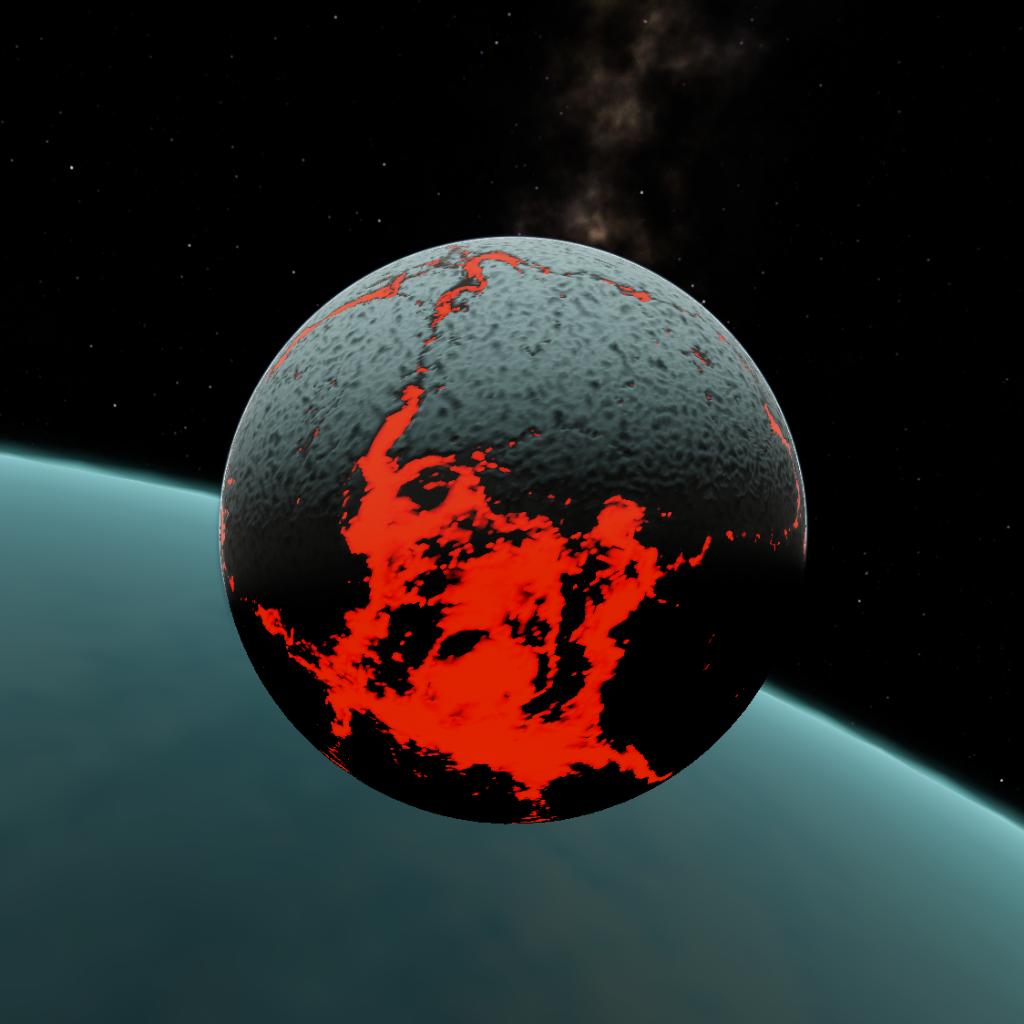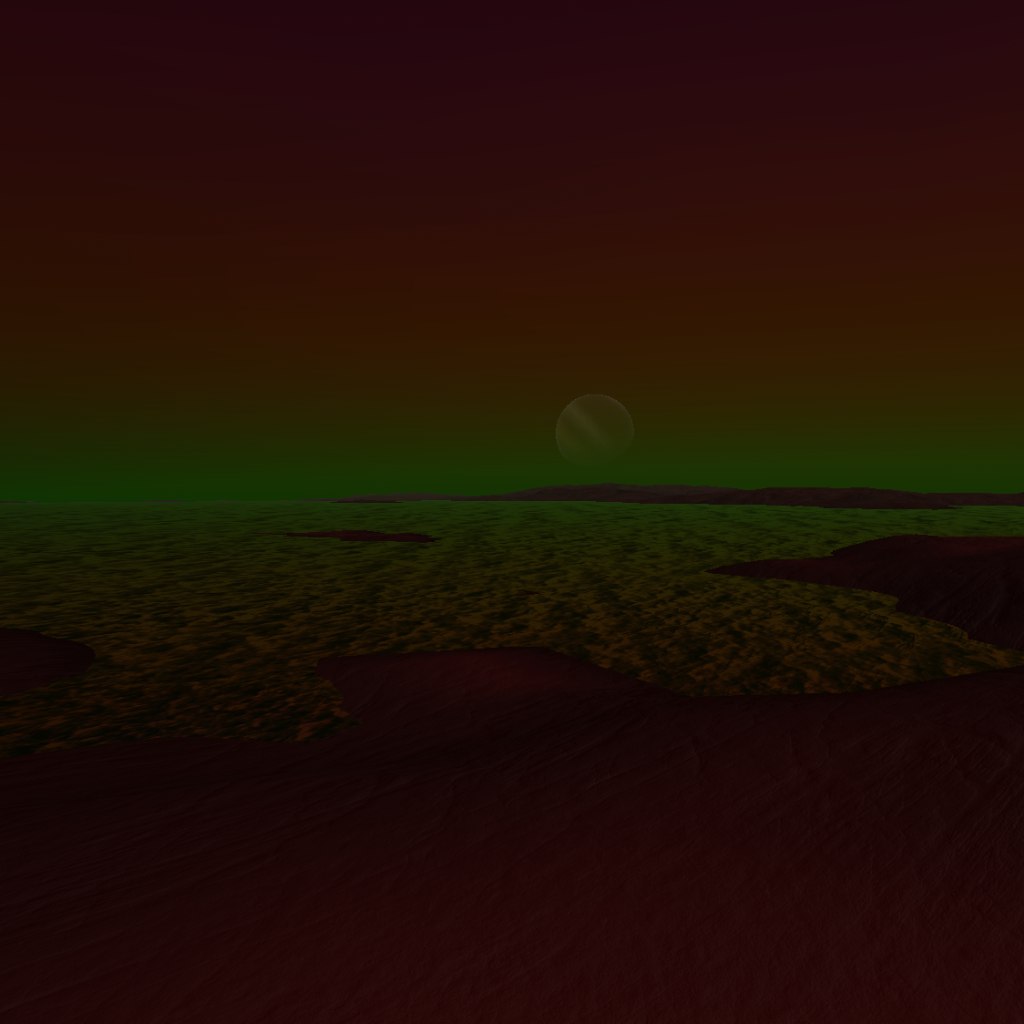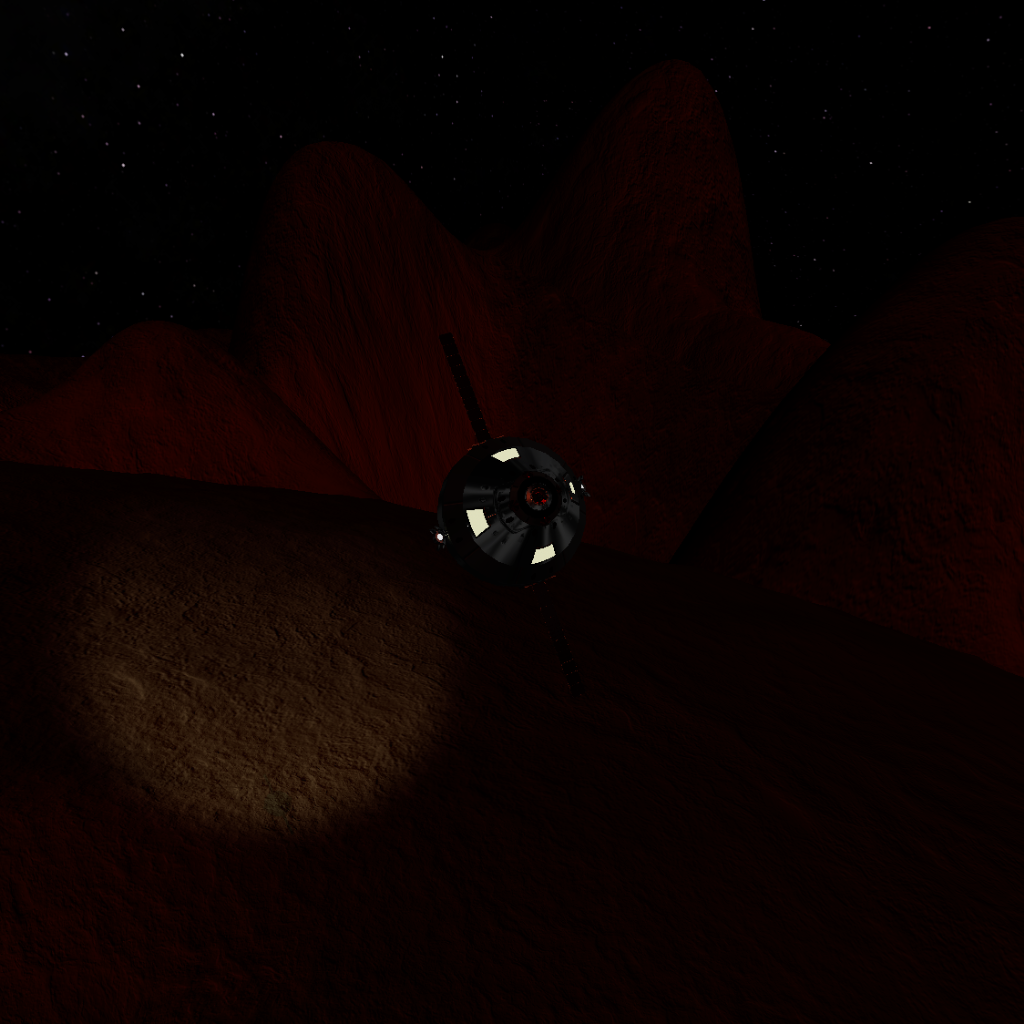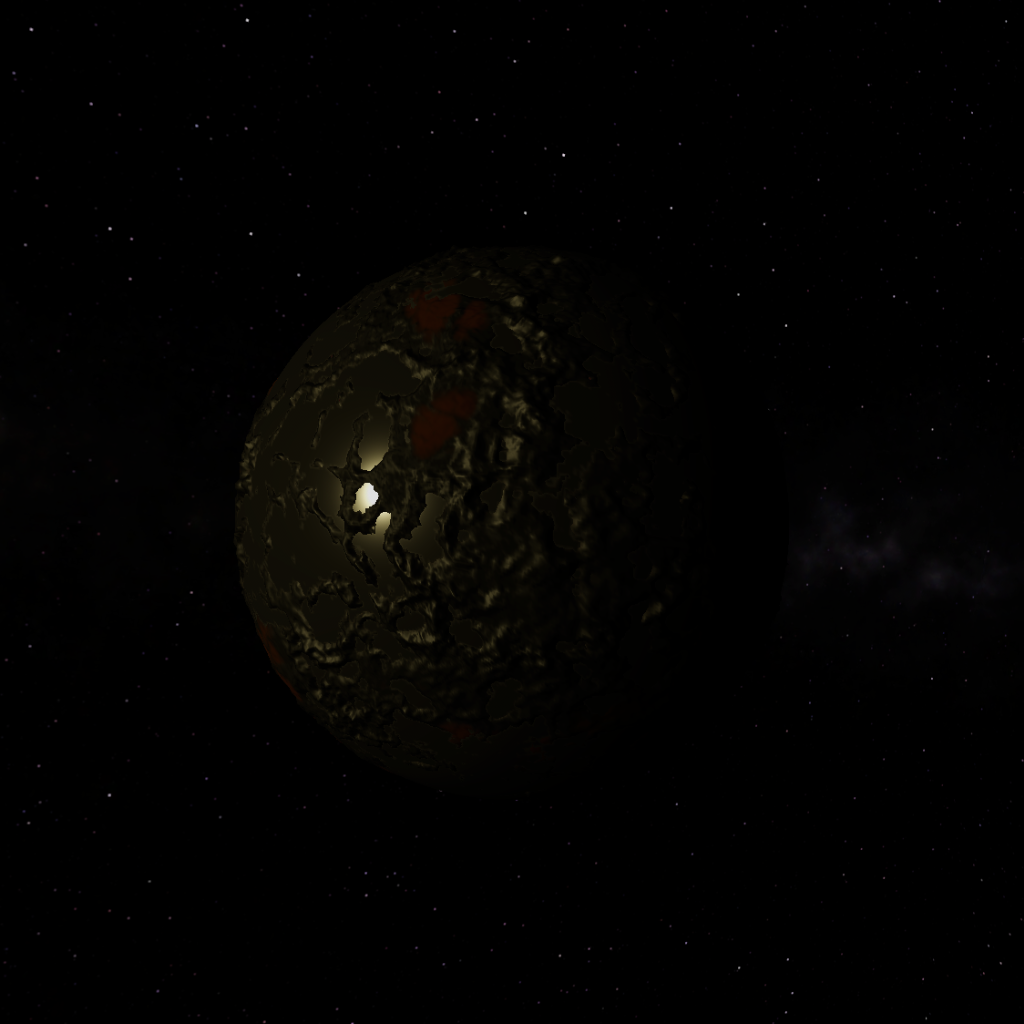Interstellar travel has arrived to Simple Rockets 2!
Stellar Neighborhood brings 74 high quality and unique planetary bodies to your PC or mobile, with a total of 8 planetary systems on real interstellar scales. The game world extends to 14 light years, to the farthest star system in the pack, Wolf 1061.
The experience is completely bug free and stable, lacking stuttering and image artifacts in map view, as well as mobile friendly. In fact, the pack was developed on mobile. This system pack is based on real star systems and its home system is Sol, Earth.
The star systems were designed without a great degree of realism, and were instead with the premise of delivering the player with a unique experience, with each planet distinctly different from one another. Getting to these worlds will not be easy though, Hohmann transfers will not get you there.
To conquer them, you must master interstellar navigation and brachistochrone transfers, which will be outlined in a tutorial guide at the bottom of this page. At the end of the day, you will be left with amazing sights and the great achievement of interstellar navigation.
Luhman 16 (6.52 ly): A pair of brown dwarfs orbiting each other, the system holds a total of 3 planets and 2 moons for you to explore. Orbiting Luhman 16 A is 2 planets, a small tidally locked carbonia with black canyons of oil and a large red gas giant with a beautiful red ring system as well as a couple of moons. Inside its atmosphere are huge swirling storms that contrast’s planet’s red tint with black. Orbiting Luhman 16 B is a single rocky heavy-weight. An atmosphere is present here, but not dense enough to fly in.
Tau Ceti (11.90 ly): A 78% Sol mass yellow dwarf, it hosts 4 planets, 2 moons, and a binary moon system. Unique to Tau Ceti is a toxic, boiling hot oceania devoid of land, a habitable world with a massive continent spanning impact crater filled with water, a superhabitable terra around a gas giant, and an icey binary pair that endlessly dance around each other. With so much water and habitable planets in the system, Tau Ceti is truly a paradise.
Barnard’s Star (5.98 ly): A 14% Sol mass red dwarf hosting 3 planets and 2 moons to explore. Unique to it is a habitable mountainous and craggy icy tundra and a toxic atmospheric moon with craters of sulfuric acid heated by its gas giant parent.
Wolf 1061 (14.04 ly): A 29% Sol mass red dwarf featuring 4 planets and 2 moons to visit. Among the system is a stormy ringed hellscape battered by eternal lightning storms, a world spanned with deep canyons as if chiseled into the surface by a god, and a rocky desert moon almost skimming its gas giant parent’s atmosphere.
Alpha Centauri (4.37 ly): A trinary star system holding 7 planets and 3 moons to discover. The system is composed of Alpha Centauri A and B and Proxima Centauri. Notable here is a green gas giant holding a mysterious green luminescent substance in the atmosphere, a cold gas moon, a mountainous desert world with blue soil mainly composed of copper, and a tidally locked world frozen on its dark side and ocean on its day.
Epsilon Eridani (10.47 ly): A single orange dwarf lighting up 4 planets and 4 moons. In this system is a small dense planet with oceans of reflective mercury, a habitable terra with a muddy brown surfaces and green-blue rivers of water, a cold almost venusian like world debated whether or not to have a surface, a moderate ocean moon, and a ringed rocky moon holding lava within a large impact crater.
Sirius A (8.61 ly): A binary system composed of a 206% Sol mass main sequence star and a 102% Sol mass white dwarf. Here are 6 planets and 2 moons to discover. Among its worlds is a hot hellscape with blue lava from burning sulfur and a sulfuric atmosphere, a moon holding oceans of liquid methane, and the dense remnants of two gas giants.
Sol (Home): Lastly, our home system. Included are Venus, Earth, Luna, Mars, Jupiter, Io, Ganymede, Saturn, Enceledus, and Titan.
And many more unique planets and moons which were not described!
As a final note, in order to get to these systems you must develop or download an ion powered starship with at least a dV of 1/3 the speed of light (100,000,000 m/s). Another option is enabling infinite fuel in the dev console by entering “MLI”. The dev console keybinding is unbinded by default.
Linked is a guide on how to do the former option:
https://www.simplerockets.com/Forums/View/139950/A-Guide-to-Interstellar-Navigation-Brachistochrones-Fuel-Budgeting-and-ISV-Des
For mission planning, also linked here is a spreadsheet with each planet's description and properties documented:
https://docs.google.com/spreadsheets/d/1TLWf9HPFFCZoT3EsDxMy-oXbMof6MFG8cIFMSrcrE0c/edit?usp=sharing
Thank you for reading, and enjoy!
GENERAL INFO
- Predecessor: Stellar Neighborhood v1.3
- Created On: iOS
- Game Version: 0.9.704.0
CELESTIAL BODIES
| Name | Parent | Radius | Surface Gravity | Apoapsis | Periapsis |
|---|---|---|---|---|---|
| Sol | 139.1 Mm | 279.3 m/s | - | - | |
| Venus | Sol | 1,210 km | 8.9 m/s | 10,294.6 Mm | 10,155.8 Mm |
| Earth | Sol | 1,274 km | 9.8 m/s | 15,124.5 Mm | 14,648.2 Mm |
| Luna | Earth | 350 km | 1.6 m/s | 41,485 km | 37,159 km |
| Mars | Sol | 678 km | 3.7 m/s | 24,832.6 Mm | 22,490.3 Mm |
| Jupiter | Sol | 13,980 km | 24.8 m/s | 78,139.0 Mm | 76,655.0 Mm |
| Io | Jupiter | 364 km | 1.8 m/s | 56,931 km | 56,588 km |
| Ganymede | Jupiter | 527 km | 1.4 m/s | 115.9 Mm | 113.7 Mm |
| Saturn | Sol | 11,400 km | 10.5 m/s | 148,195.9 Mm | 145,528.2 Mm |
| Enceladus | Saturn | 50 km | 0.2 m/s | 47,387 km | 47,101 km |
| Titan | Saturn | 515 km | 1.4 m/s | 124.5 Mm | 119.4 Mm |
| Alpha Centauri A | Sol | 170.2 Mm | 182.9 m/s | 41,356,315,002.0 Mm | 41,273,684,998.0 Mm |
| Alpha Centauri Ab | Alpha Centauri A | 4,100 km | 5.6 m/s | 4,218.1 Mm | 4,209.7 Mm |
| Alpha Centauri B | Alpha Centauri A | 120.1 Mm | 333.1 m/s | 301,178.7 Mm | 225,142.1 Mm |
| Alpha Centauri Bb | Alpha Centauri B | 960 km | 7.9 m/s | 10,347.6 Mm | 10,326.9 Mm |
| Alpha Centauri Bc | Alpha Centauri B | 2,080 km | 21.4 m/s | 18,260.7 Mm | 18,224.2 Mm |
| Alpha Centauri ABb | Alpha Centauri A | 5,200 km | 11.2 m/s | 816,937.7 Mm | 541,153.5 Mm |
| Alpha Centauri ABc | Alpha Centauri A | 14,700 km | 106.2 m/s | 2,661,307.6 Mm | 2,333,349.7 Mm |
| Alpha Centauri ABc I | Alpha Centauri ABc | 5,070 km | 8.9 m/s | 753.3 Mm | 751.8 Mm |
| Alpha Centauri ABc I i | Alpha Centauri ABc I | 180 km | 0.8 m/s | 44,772 km | 44,683 km |
| Proxima Centauri | Alpha Centauri A | 21,455 km | 1.41 km/s | 122,015,985.8 Mm | 121,772,197.6 Mm |
| Proxima Centauri B | Proxima Centauri | 1,363 km | 10.0 m/s | 588.1 Mm | 579.9 Mm |
| Proxima Centauri C | Proxima Centauri | 2,950 km | 12.6 m/s | 20,768.7 Mm | 19,586.7 Mm |
| Proxima Centauri C I | Proxima Centauri C | 32 km | 0.2 m/s | 52,898 km | 34,600 km |
| Barnard’s Star | Sol | 27,228 km | 1.05 km/s | 56,469,803,392.7 Mm | 56,356,976,607.3 Mm |
| Barnard’s Star B | Barnard’s Star | 610 km | 4.8 m/s | 274.7 Mm | 274.1 Mm |
| Barnard’s Star C | Barnard’s Star | 1,210 km | 8.8 m/s | 628.9 Mm | 615.1 Mm |
| Barnard’s Star D | Barnard’s Star | 6,500 km | 9.7 m/s | 2,209.6 Mm | 2,205.2 Mm |
| Barnard’s Star D I | Barnard’s Star D | 220 km | 1.5 m/s | 28,005 km | 27,949 km |
| Barnard’s Star D II | Barnard’s Star D | 140 km | 0.6 m/s | 52,539 km | 52,434 km |
| Luhman 16 Barycenter | Sol | 2,000 m | 78,326,496.26 km/s | 61,583,702,182.9 Mm | 61,460,657,817.1 Mm |
| Luhman 16 A | Luhman 16 Barycenter | 11,885 km | 1.23 km/s | 46,217.0 Mm | 46,124.6 Mm |
| Luhman 16 Ab | Luhman 16 A | 950 km | 7.1 m/s | 103.6 Mm | 98,505 km |
| Luhman 16 Ac | Luhman 16 A | 15,500 km | 23.0 m/s | 4,010.9 Mm | 3,986.7 Mm |
| Luhman 16 Ac I | Luhman 16 Ac | 10 km | 0.1 m/s | 63,610 km | 63,483 km |
| Luhman 16 Ac II | Luhman 16 Ac | 320 km | 2.6 m/s | 123.9 Mm | 121.1 Mm |
| Luhman 16 B | Luhman 16 Barycenter | 14,542 km | 690.4 m/s | 46,217.0 Mm | 46,124.6 Mm |
| Luhman 16 Bb | Luhman 16 B | 1,900 km | 22.5 m/s | 397.0 Mm | 396.2 Mm |
| Sirius A | Sol | 238.1 Mm | 192.6 m/s | 81,547,866,403.9 Mm | 81,384,933,596.1 Mm |
| Sirius Ab | Sirius A | 805 km | 6.2 m/s | 49,836.0 Mm | 49,736.5 Mm |
| Sirius B | Sirius A | 1,170 km | 4,028.50 km/s | 330,615.0 Mm | 152,205.1 Mm |
| Sirius Bb | Sirius B | 3,180 km | 31.5 m/s | 304.7 Mm | 206.3 Mm |
| Sirius Bc | Sirius B | 2,340 km | 23.2 m/s | 42,014.7 Mm | 39,623.6 Mm |
| Sirius ABb | Sirius A | 92,400 km | 3.8 m/s | 946,614.5 Mm | 627,053.6 Mm |
| Sirius ABb I | Sirius ABb | 1,080 km | 7.7 m/s | 97,196 km | 97,002 km |
| Sirius ABc | Sirius A | 6,900 km | 8.5 m/s | 1,718,352.8 Mm | 1,549,977.9 Mm |
| Sirius ABd | Sirius A | 15,100 km | 33.4 m/s | 7,010,967.3 Mm | 6,298,412.9 Mm |
| Sirius ABd I | Sirius ABd | 1,645 km | 4.8 m/s | 348.5 Mm | 347.8 Mm |
| Epsilon Eridani | Sol | 102.4 Mm | 423.0 m/s | 99,200,251,154.7 Mm | 99,002,048,845.3 Mm |
| Epsilon Eridani B | Epsilon Eridani | 481 km | 10.2 m/s | 4,903.4 Mm | 4,893.6 Mm |
| Epsilon Eridani C | Epsilon Eridani | 1,010 km | 7.8 m/s | 10,022.9 Mm | 10,002.9 Mm |
| Epsilon Eridani C I | Epsilon Eridani C | 450 km | 2.1 m/s | 9,679 km | 9,660 km |
| Epsilon Eridani D | Epsilon Eridani | 2,400 km | 5.4 m/s | 24,070.1 Mm | 24,022.0 Mm |
| Epsilon Eridani D I | Epsilon Eridani D | 510 km | 3.6 m/s | 32,788 km | 32,722 km |
| Epsilon Eridani E | Epsilon Eridani | 11,600 km | 9.4 m/s | 96,893.1 Mm | 96,699.5 Mm |
| Epsilon Eridani E I | Epsilon Eridani E | 130 km | 0.7 m/s | 88,695 km | 88,518 km |
| Epsilon Eridani E II | Epsilon Eridani E | 370 km | 1.5 m/s | 205.5 Mm | 205.1 Mm |
| Tau Ceti | Sol | 110.4 Mm | 337.0 m/s | 112,742,630,005.4 Mm | 112,517,369,994.7 Mm |
| Tau Ceti B | Tau Ceti | 1,100 km | 11.8 m/s | 4,042.4 Mm | 4,034.4 Mm |
| Tau Ceti C | Tau Ceti | 1,270 km | 7.8 m/s | 9,935.4 Mm | 9,915.6 Mm |
| Tau Ceti D | Tau Ceti | 1,340 km | 12.8 m/s | 14,246.1 Mm | 14,103.2 Mm |
| Tau Ceti D I | Tau Ceti D | 110 km | 0.5 m/s | 4,968 km | 4,573 km |
| Tau Ceti E | Tau Ceti | 8,300 km | 7.6 m/s | 42,141.5 Mm | 42,057.3 Mm |
| Tau Ceti E I | Tau Ceti E | 1,457 km | 11.3 m/s | 45,351 km | 45,260 km |
| Tau Ceti F Barycenter | Tau Ceti | 2,000 m | 1,423.25 km/s | 73,443.9 Mm | 73,297.2 Mm |
| Tau Ceti Fb | Tau Ceti F Barycenter | 800 km | 4.7 m/s | 9,800 km | 9,780 km |
| Tau Ceti Fa | Tau Ceti F Barycenter | 780 km | 4.4 m/s | 9,800 km | 9,780 km |
| Wolf 1061 | Sol | 42,755 km | 877.7 m/s | 132,961,829,006.3 Mm | 132,696,170,993.7 Mm |
| Wolf 1061 B | Wolf 1061 | 670 km | 5.2 m/s | 1,212.7 Mm | 1,210.3 Mm |
| Wolf 1061 C | Wolf 1061 | 1,310 km | 10.8 m/s | 2,061.6 Mm | 2,057.5 Mm |
| Wolf 1061 D | Wolf 1061 | 1,610 km | 16.7 m/s | 3,761.8 Mm | 3,754.3 Mm |
| Wolf 1061 E | Wolf 1061 | 15,500 km | 23.0 m/s | 22,563.0 Mm | 22,517.9 Mm |
| Wolf 1061 E I | Wolf 1061 E | 625 km | 4.9 m/s | 27,252 km | 27,197 km |
| Wolf 1061 E II | Wolf 1061 E | 312 km | 1.7 m/s | 155.6 Mm | 155.3 Mm |




































looking at the system post some 3 years later gives me nostalgia...
oh, ok
@Aludra877 the planets are mostly fictional
good system, do the really planets really look like this or did you make up what they look like?
@lordvader0219 oh ok
@NotVedhaspace you could upload more if you login from a computer.
How did you get to upload more pictures?
How big is this (in terms of data)-
What is system editor? @lordvader0219
@Supermarinespitfire13 I manually decreased the sphere of influence on the system editor
How did you get the distances without any intersecting soi’s
Nice idea! Great job with the planets. Haven't tried it out yet, seems pretty fun!
If anybody is interested in visiting these planets but is unable to make an interstellar craft, i may soon upload a sandbox with a launch spot saved on all celestial bodies that can be landed on so that you can explore them with less hassle.
I made a interstellar system but most of the sphere of influences are not—you can’t enter them—gravity is off. So I didn’t post it
Tau Ceti D looks exactly like Puf from the yet to come KSP 2
@SpaceSharkie201 Perhaps in a future update, but for now we've been working on LP-145-141, OGLE-2019-BLG-0551, and Procyon. Plus much more.
Please don’t tell me you forgot 61 Cygni
@Hyperspacex I use the "overload" mod and you casn tinker with the dissconect force and set it to like 20000000 make sure you target the body and get out of the atmosphere before firing. X
HOW
@Pejayous
It’s amazing I can’t wait to try my hyper dragon with it👌😃
It took me 120 yrs to orbit a system lol 😂
I just use disconnectors with the force at like 27E^7 and just shoot the planet
@sacr3dbac0n0 thank you will try 😊
@RStar You need to be moving at least 9% of light speed to get any where in a reasonable amount of time with timewarp, just like in real life. Aim directly for the star and burn. Refer to this guide:
https://www.simplerockets.com/Forums/View/139950/A-Guide-to-Interstellar-Navigation-Brachistochrones-Fuel-Budgeting-and-ISV-Des
Still can't reach!! Used some wrapdrive craft... Any way to reach faster lol..m even with max wrap speed..still may be needed full day to reach 🙄🙄.. pls any tips